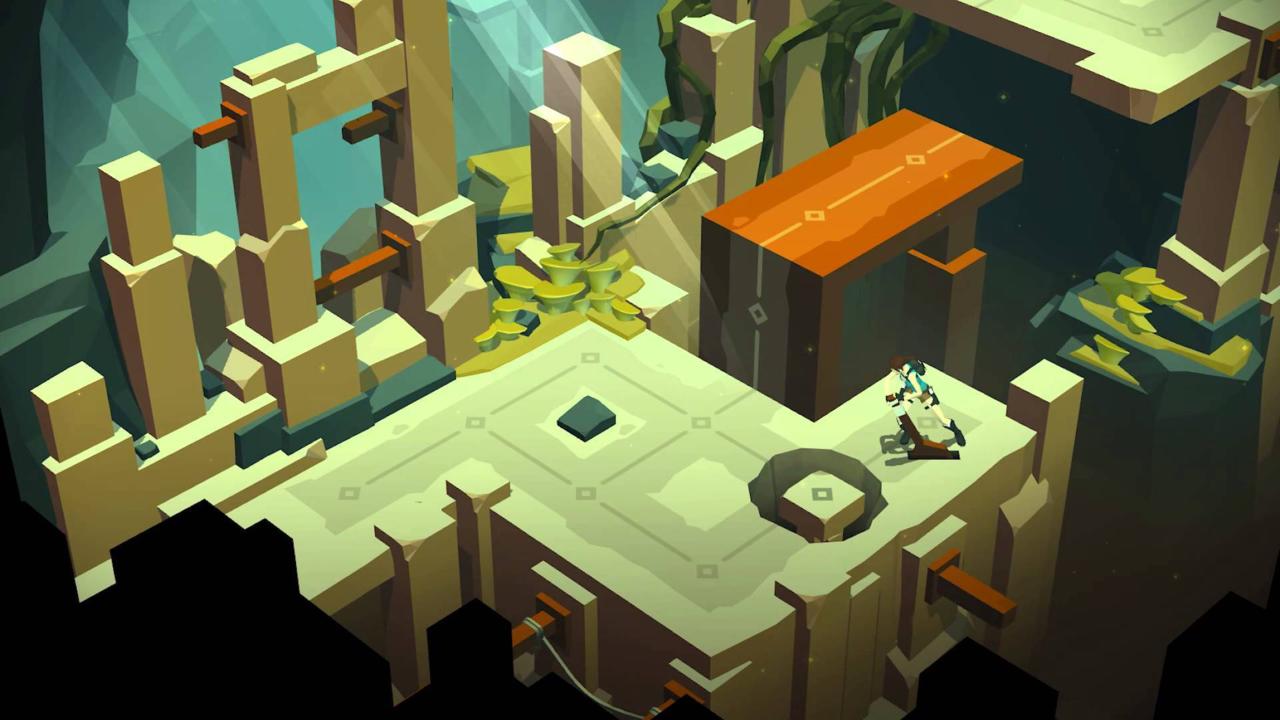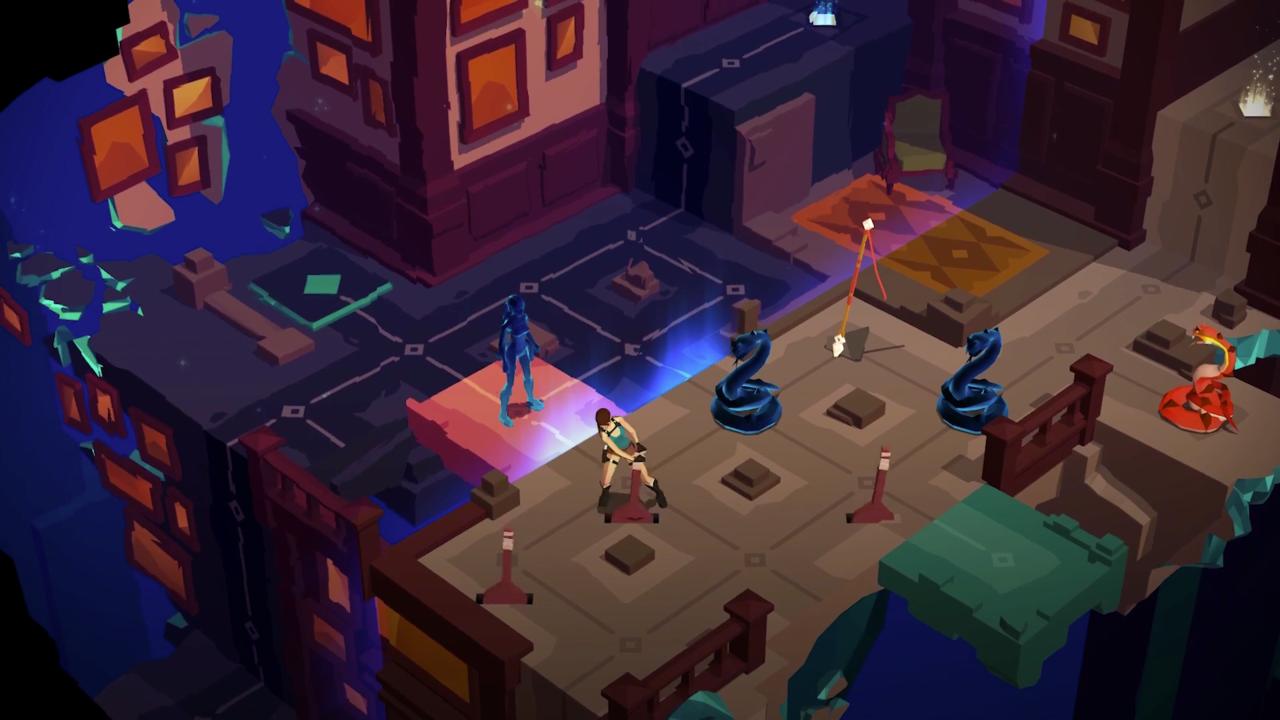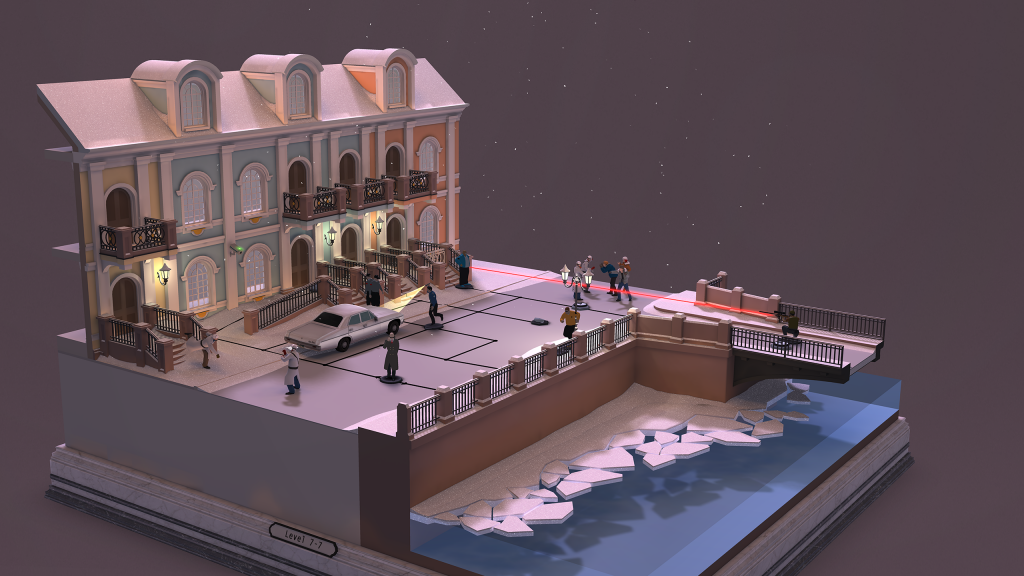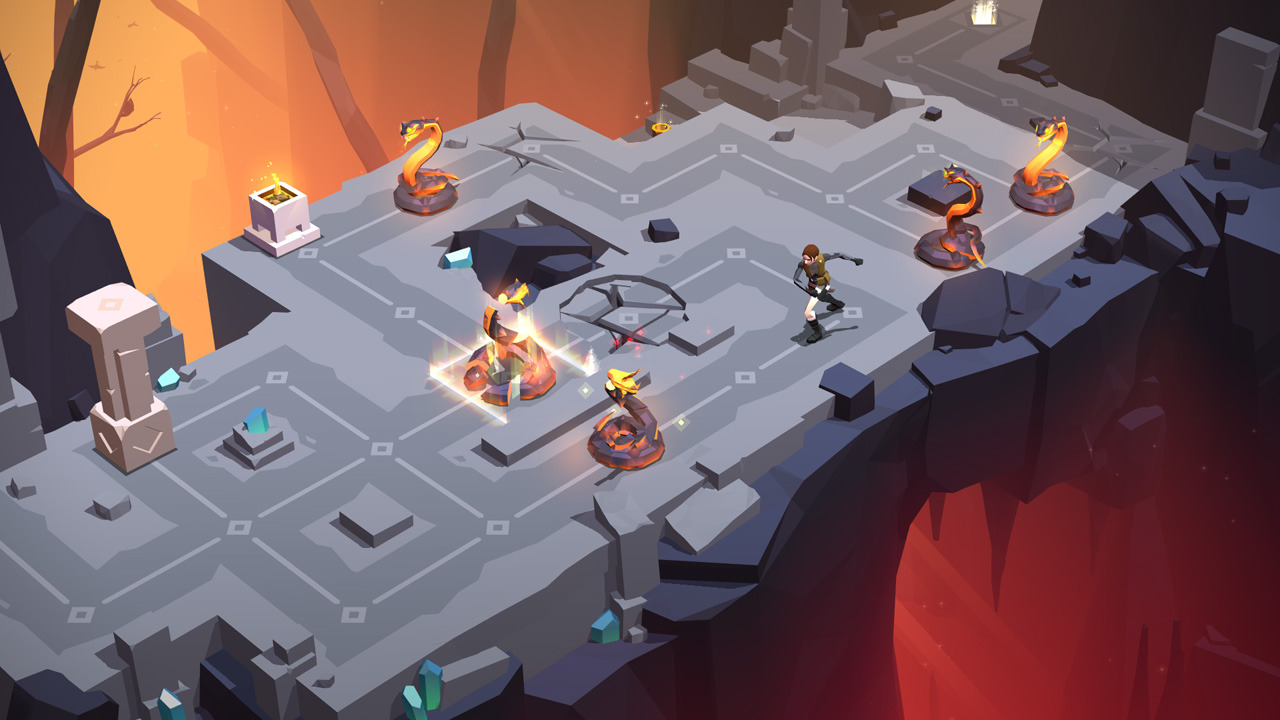Square Enix Montreal's critically acclaimed mobile game Lara Croft Go recently made its way onto PS4, Vita, and PC. Like the Hitman Go port before it, the game translates well to traditional platforms, allowing you to easily navigate across its puzzle-filled stages. While the new release contains all the content released for the original at launch and this past Thanksgiving, it also features a new expansion.
Titled Mirror of Spirits, the new campaign takes place in Croft Manor after it has been altered by an ancient artifact that shatters reality, as we know it. Lara is split from her spirit in the process, causing it to take the form of a doppelganger. She must reclaim her spirit and fix the universe-altering effects of the mysterious artifact before it's too late.
Kingdom Come: Deliverance 2 - Official Cinematic Announcement Trailer Stellar Blade - BIBI ‘Eve’ Official Music Video Trailer | PS5 Apex Legends: Urban Assault Collection Event Trailer Total War: WARHAMMER III - Elspeth von Draken Gameplay Showcase Genshin Impact - "Arlecchino: Sleep in Peace" | Official Character Teaser Potionomics: Masterwork Edition - Official Announcement Trailer Sclash - Console Release Date Trailer Snowbreak: Containment Zone - "Gradient of Souls" Version Trailer Harold Halibut GameSpot Video Review Nancy Drew: Mystery of the Seven Keys | World Premiere Official Trailer Modern Warfare III & Warzone - Official Cheech & Chong Bundle Gameplay Trailer SteamWorld Heist II – Official Reveal Gameplay Trailer
Please enter your date of birth to view this video
By clicking 'enter', you agree to GameSpot's
Terms of Use and Privacy Policy
Square Enix Montreal enlisted the help of KO-OP--the studio behind upcoming PS4 and PSVR game Gnog--to develop the Mirror of Spirits expansion. It's available now for PS4 and Vita, with PC and mobile getting it sometime in March.
We recently got the opportunity to talk to Antoine Routon of Square Enix Montreal, as well as Saleem Dabbous and Bronson Zgeb of KO-OP about Lara Croft Go, its expansion, and the Go series in general.
How was it bringing Lara Croft Go from mobile devices to more traditional platforms?
Antoine Routon: The thing with Lara Croft Go that's pretty cool is it's a game without texture; we didn't need to upscale any texture for a bigger screen. This kind of low-poly, flat-shaded aesthetic works naturally when it's being rendered at a bigger resolution.
We put in a lot of care in the composition of the game's environment when we originally made it, so the visuals could work well regardless of the screen size. When we ported the game to PS4, it was nice to just physically increase the resolution and have it work.
And for a game where you originally moved the character via touch display, it also controls very naturally in these new versions.
AR: The control of the main character actually informed the way we made Lara Croft Go. In a console game, you use the joystick to move your character around, but on a touch device, you can't do that. Not a lot of developers have figured out how to move a main character through an environment in a mobile game. We solved this issue with a puzzle solving structure; you move one tile at a time.

We've got this foundation that's tile-by-tile movement, but then we add elements and movements from triple-A games. Everything in Lara Croft Go is informed by how the puzzles end up being on this big cube, but we combine this with modern elements and characteristics from classic Tomb Raider games. We try to work and weave these qualities together, so the experience translates well on a touch device, giving you this feeling of adventure as you traverse the game's environments.
There's added content in Lara Croft Go's PS4 release, but it's not developed by Square Enix Montreal. Can you tell me about how that came to be?
AR: It's the 20th anniversary of Tomb Raider, so we wanted to make something special that could celebrate the franchise. But Lara Croft Go was already our love letter to the franchise, so we weren't sure how to go about it. How can we celebrate the franchise when we'd already done that? Instead of trying to do something new in the existing game ourselves, we thought maybe it would be cool to bring some fresh creative minds on board.

That's when I remembered the indie studio KO-OP. I'd seen their game Gnog at PAX and loved its attention to detail. It has this cool aesthetic as a puzzle game, and like Lara Croft Go, it isn't aiming to be a huge production, but rather a small and simple game that pushes its execution above all else. I had a feeling that the way we approached game development was very similar, so I approached KO-OP director Saleem Dabbous and we talked a little bit about how we see things. It turned out that we are aligned in the way we approach design.
Saleem Dabbous: What was cool for us is that the more we worked together, the more we realized that our philosophies are almost the same; they're just on different scales. A collaboration made a lot of sense, because we're both approaching the same problems with the same sensibilities from different angles, so that means we could meet somewhere in the middle and make something special.
The new expansion takes place in Croft manor. How did you arrive at the decision to use it as your setting?
SD: We haven't played Tomb Raider in a long time, so when we first started talking as a team, we asked: "What do we all remember about classic Tomb Raider and Lara Croft?" Everyone was like: "Remember the manor? Remember how you felt when you were exploring that?" The manor has a lot of emotional resonance for us, so we deliberated over how we'd put it into the Lara Croft Go universe. Our idea was to reimagine that space using this narrative idea where reality itself shatters because of an ancient artifact Lara found. By shattering the world, that let us play with what the manor could be and helped us fit it into our own little sandbox of mechanics and puzzles.
What it is about the Croft manor that makes it so well regarded by fans?

SD: I think homes are an underappreciated, underexplored setting in gaming. The fact that Gone Home takes place in one is the reason why it's such an emotionally-resonant game. We all have our own relationships to our homes. I think the manor is a little bit abstracted from that, but it holds that same origin story to it. It's where Lara comes from.
AR: Right, homes are a very emotional place. You can see and learn so much about someone, about how someone lives, and their relationships through their mementos and the environment they go back to at the end of the day.
How was it taking on this project? There's such a rich legacy involved with Tomb Raider. As indie developers, was it difficult to work with such an iconic property?
AR: It was important for us not to feel the pressure of that legacy too hard. If we wanted to approach it in a way where we're respecting the original but also making a KO-OP game, it was important for us to ask how would we reinterpret this whole world instead of trying too hard to follow in the footsteps of what came before.
Bronson Zgeb: If anything, it gave us creative boundaries that we could work within. These things are set, so that's your little playground to create. In some ways, it's easier than working from nothing.
Aside from Lara Croft Go, I've noticed that Hitman Go also made the transition to PS4. Is that the general plan and flow for Square Enix Montreal? Or will the team someday consider putting these games on these platforms simultaneously?
AR: It's something we're thinking about, but what's clear is that we're making games on mobile first, which is great because it allows us to create these focused experiences. We're not going to try to compete with the other, more triple-A studios at Square Enix. The way our games translate so well to consoles is a testament to their quality and the time we spend on them. However, there remains a stigma behind playing on mobile, and as much as we're helping fight against that, we also want to bring our games to people that would be more comfortable playing it on PS4.

And then there's the question of the delay between the releases on different platforms. To be honest, I don't have an answer right now. It's something we're investigating. Mobile is still our main focus, but I'm not 100% sure exactly how it's going to play out. It depends on the project; the future will tell.
Have you ever been interested in bringing Go games to PSVR, or even VR in general?
AR: We have brought Hitman Go to the Oculus and Gear, which was a very interesting exercise in design for us. It's cool, because there's so much to explore on that platform. The standards of interfacing with mobile are completely different from VR. When you're making a tutorial for a VR game, you need to explain your game as much as the device itself. For example, you need to explain the Gear's cursor. But Hitman Go worked well in VR, exemplifying this idea of a dollhouse where you're just looking around, finding little freeze-frame scenes of people interacting as you navigate Agent 47 past each level.

I'm going to take a stance here and say Lara Croft Go is probably not coming to VR. That game's perspective was handcrafted and controlled. For example, you see branches or rocks in the foreground perfectly aligned with the puzzle, which is also perfectly aligned with the vista point in the background. And even in the editor, if you turn the camera a little bit, it's like seeing behind the stage. We control where you look constantly in that game, and for that reason, I think it's not a game for VR. It's important for us to make things that make sense, and this one wouldn't.
I've noticed that your team often moves from property to property. Have you also considered making sequels of these games? Could we maybe see a Lara Croft Go 2 someday?
AR: Never say never. It's fun to make old games, but it's also important to know when you've reached the end of a cycle. There's a trilogy here: Hitman, Lara Croft, and Deux Ex. We don't want to be known only as the Go studio; we want to create new stuff too.
We got a few very exciting projects in the pipeline. We've hired new people, like Teddy Dief of Hyper Light Drifter fame, and Renaud Bédard, a programmer that worked on Fez. There are a few more super-talented people that we're talking to at the moment. But overall, our strategy is to keep creating high-quality games, with a focus on mobile, that each sports the possibility of being ported over.
I was curious what your thoughts were about Pokemon Go? Your team specializes in distilling a series' qualities into a mobile experience; I was wondering what you thought about the way Niantic has approached that?
AR: Well, there's the naming thing. That's the elephant in the room here; I'm not going to even mention it. [Laughs] Actually, we're not even the first Go game. I think it was Angry Birds Go.
It's interesting to see the history of Pokemon Go. Everybody thinks it was an overnight success, but they had Ingress first, which helped them build up their expertise. I'm impressed that someone thought to mix that game's mechanics with a powerful brand like Pokemon. It's a great fit that works well together.

But I like games that push the boundary of what games are and I love it when games can inspire people who don't play to get involved. So many people say: "No, I'm not a gamer." But they play 10 to 15 hours of Candy Crush or Pokemon Go a week. They insist still that they're not gamers; I find that fascinating. Games like Pokemon Go expand the reach of what video games can be and who's playing them, so it's exciting.











